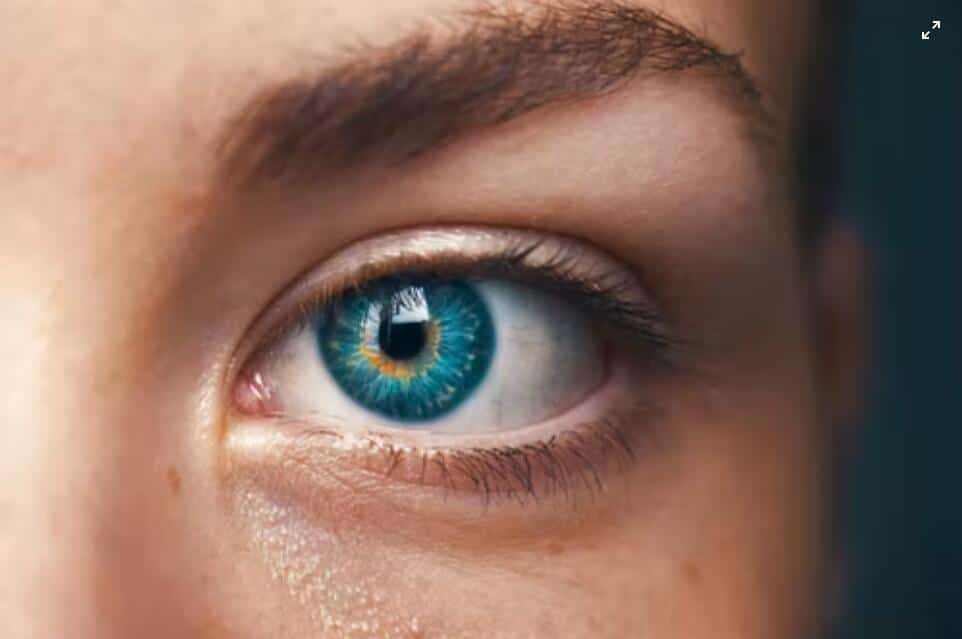Color blindness is a condition that affects millions of people around the world. However, there’s no cure for colorblindness. Sure, you can get glasses that correct your vision so everything appears in proper color, but what if you could see the world with completely different eyes? That’s where colorblind contacts come in!
The idea of being able to see the world through different eyes isn’t new.
In fact, research into colorblindness has been going on for decades. Colorblindness is a genetic disorder that affects around 8% of males and 0.5% of females worldwide, but some people have developed lenses that help them see colors more clearly.
In recent years, these lenses have become more advanced and now allow users to experience the world like someone without any form of visual impairment or impairment from other causes such as macular degeneration (a common age-related eye disease).
How Color Blind Contacts Work
Color blind contacts are made of special plastic, which is designed to filter out certain wavelengths of light. The filters may be in the form of a gel or a film placed over your eye in a contact lens.

The most common type of color blindness is red-green deficiency (deuteranomaly), which affects about 4% of men and 2% of women worldwide. People with this condition have difficulty distinguishing between reds and greens–they might see brown where you see green, or they might not notice if something changes from one color to another when they look away from it briefly. Not everyone who has deuteranomaly will wear color blind lenses; some people don’t want to wear them because they find them uncomfortable or unattractive on their faces (the lenses tend to make eyes appear darker).
The role of filters
Color blindness filters are used to manipulate light wavelengths and enhance color perception. They can be used to correct color blindness, or they can be used to enhance visual experiences in other ways.
Color blindness filters work by manipulating the wavelengths of light entering your eye so that you see more clearly. These filters work by absorbing some colors and reflecting others back into your retinae (the light-sensitive area at the back of each eye). In this way, they block out certain colors while allowing others through–creating an image that looks better than what would normally come through without them!
Enhancing color perception
Colorblindness occurs when there’s an imbalance between cones in your eyes: some people have more cones than others, causing them to see less clearly; other people have fewer cones than average and therefore lack some shades of color altogether. The best way for these individuals–and anyone else interested in enhancing their experience of life–to get back what was lost is through contact lenses that filter out specific wavelengths from reaching the retinae at all!
Colorblind contacts are designed to enhance color perception. They do this by filtering out certain wavelengths of light, which allows the wearer to see colors that they were previously unable to see. This can be helpful for people with red-green color blindness (the most common type), because it makes it easier for them to tell the difference between red and green objects or people.
The Science Behind Colorblind Contacts
Colorblind contacts are designed to enhance a person’s ability to see color. This can be done in two ways: by filtering out certain wavelengths of light or by adding additional wavelengths.
The first method relies on filters that block certain colors from reaching your eye. For example, if you want to enhance red perception, then you might use a filter that blocks blue light (which is perceived as green) but allows other colors through unimpeded. The second method involves adding additional wavelengths directly into the viewing area of your eye so they can be processed alongside existing cone cells in your retina–the part of your eye responsible for detecting color information–resulting in enhanced overall perception of hue and brightness levels within any given spectrum
Light spectrum and color vision
It’s important to understand the difference between light spectrum and color vision. Light spectrum is a range of wavelengths that humans can see, whereas color vision is the ability to see colors within that spectrum. Colorblind people have a limited ability to see some colors, but not all–this means they might have trouble distinguishing between certain shades or hues in certain lighting conditions (e.g., fluorescent vs incandescent).

It’s also important to know that there are different types of color blindness: red-green color blindness (protanopia) occurs when you lack one type of cone cell in your eyes; blue-yellow color blindness (deuteranopia) occurs when you lack another type of cone cell; complete loss or impairment can cause monochromacy or total color blindness where all three types are missing altogether!
The role of cone cells in the retina
Cone cells are responsible for color perception. Each cone cell has a peak sensitivity to a specific wavelength of light, which means that the brain can use them to create different colors by activating different combinations of cones. There are three types of cone cells: red cones (peak sensitivity at about 565 nanometers), green cones (peak sensitivity at about 530 nanometers) and blue cones (peak sensitivity at about 450 nanometers). When light enters your eye through the lens and fovea, it hits these specialized receptors that send signals to your brain through nerve fibers called axons so you know what you’re seeing!

How colorblind contacts manipulate light wavelengths
When you wear colorblind contacts, the filter is placed in front of your eye and works to block certain wavelengths of light. The technology behind these filters is similar to that used in normal contact lenses–they’re made of plastic and contain microscopic pores that allow only certain wavelengths of light through. For example, if you have red-green colorblindness and are trying to correct it with blue-yellow filters (as illustrated above), then those filters would block out all reds and greens while allowing blues and yellows through unimpeded.
Advantages and Limitations of Colorblind Contacts
Colorblind contacts are a great alternative to expensive glasses and contact lenses. They’re also much more comfortable than hard or soft contact lenses, which can cause dryness, irritation and other problems.
However, there are some drawbacks to colorblind contacts: they cost more than regular eyeglasses or contact lenses; they don’t work for all types of color blindness; and they aren’t accessible for everyone (especially those with severe vision problems). If you’re interested in trying out colorblind contacts but have reservations about their limitations, consider these alternatives:
Pros
Color blindness is a condition in which you’re unable to see colors accurately. While it’s usually not serious, it can affect your ability to do things like drive a car or read traffic signs. Colorblind contact lenses help correct this by filtering out certain wavelengths of light and allowing you to see colors better.
This technology was originally developed for people who were born colorblind or had their sight damaged by disease or injury, but now they’re also available for those who want an enhanced visual experience when they look at the world around them.
Improved quality of life

Color blindness affects 1% – 10% of men worldwide, with similar numbers among women depending on ethnicity. If you’re tired of being asked what kind of fruit something is supposed to be (or vice versa), these contacts may help improve how people perceive your appearance and make it easier for them to interact with others who don’t share commonalities like language barriers or cultural differences.
If you’re color blind, you may have wondered what it would be like to see the world in full color. Color blindness can significantly impact your life and make it difficult to do things like drive or read traffic lights.
But what if there was a way to see more colors? What if we could help people with color blindness gain better vision? That’s exactly what we’ve done with our colorblind contact lenses!
These special lenses help those who are suffering from red-green color blindness (deuteranopia) see more detail around them by filtering out certain wavelengths of light. The result? A clearer picture for everyone!
Enhanced visual experiences
While you may have heard that colorblind people can see more colors, the truth is that they can actually see fewer. However, what they do gain in return is an enhanced visual experience of their surroundings.
Colorblind folks are able to see better in dim light and have better contrast between objects of similar color, which makes for an improved ability to detect fine details like facial features or text on a page.

Increased independence and confidence
The most important benefit of color blind contact lenses is the increased independence and confidence they can provide.
Being able to see more clearly means that you can navigate the world with greater ease, which means less stress about being different or feeling uncomfortable. You’ll also be able to make friends more easily, find employment opportunities, succeed in school and get along with co-workers better.
Cons
While colorblind contacts are not a cure for color blindness, they can be helpful for some people. For example, if you have mild red-green color deficiency and only need to see reds better, then these lenses may work well for you. However, if your vision is more severe or if there are multiple types of color blindness involved (like blue-yellow), then this technology might not be right for you.
Not a cure for color blindness
Colorblind contacts are not a cure for color blindness. They are a temporary solution that can help you see better in certain situations, but they’re not a permanent solution.
If you’re suffering from red-green colorblindness and want to improve your vision for driving or sports, then colorblind contacts may be an option for you. However, if your condition is more severe than just red-green deficiency (such as total protanopia), then these contacts probably won’t work for you because their technology does not work with all types of color blindness.
May not work for all types of color blindness
It should be noted that colorblind contacts do not work for all types of colorblindness. For example, they may not work for people with monochromatic vision or achromatopsia.
Color blind contact lenses are also not guaranteed to be 100% effective at correcting your color blindness because they don’t change the way you see colors; they help you distinguish them better.
Cost and accessibility
If you’re interested in getting colorblind contacts, but the cost is prohibitive or if they’re not available in your area yet, there are other options. Some people choose to wear glasses instead of contacts. This can be just as effective at correcting color blindness–though it may not look quite as natural.
Colorblind contact lenses are also available through prescription but only from a doctor or optometrist trained to fit them properly. You’ll need an eye exam before getting fitted for these lenses so that your optician knows exactly what kind of correction would work best for your eyesight (and hence which type of lens).
How Do I Know The Contacts Are Works For Me?
COVISN Red Green colorblind contacts are specifically designed to enhance color perception and help with color differentiation for those who are red green colorblind. We understand how difficult it can be to live with this condition, and we are proud to offer a product that can make a significant difference in people’s lives.
To help you determine if our colorblind contacts are right for you, we encourage you to check out our video on below video.
The video check for Ishihara test while wearing our contacts, if you can get improvement,and see the difference our contacts.our contacts are going to work for you.
Alternative Solutions for Color Blindness
There are a lot of alternative solutions for color blindness.
The most popular solution is to use apps on your smartphone or tablet, which can help you identify colors more easily. Many people also wear glasses that make it easier for them to see colors correctly. If you’re interested in purchasing these types of items for yourself, take a look at our list below:
- Color Blind Glasses: These glasses are designed specifically for those who suffer from red-green color blindness (the most common type). They’re made from high-quality materials so they’ll last longer than cheaper alternatives. You can even find similar products specifically designed for kids and seniors!
- Color Blind Apps: There are several excellent apps available on both iOS and Android platforms which allow users with this condition see objects like stop signs better by changing the way they appear on screen or providing additional information about their surroundings such as traffic lights’ positions relative too each other.”
- Gene therapy (future possibilities):Gene therapy is a form of treatment that uses DNA to treat disease. In the future, gene therapy may be used to treat color blindness. However, it’s still in its early stages and not yet available for the general public.
Conclusion
We hope you found this article to be informative and helpful. The world is amazing, and the science behind colorblind contact lenses can help us see it in new ways. We want everyone to have access to these kind.
Articles You Might Interest
What Does Color Blind Lantern Test Tells You About Your Vision
Color Blindness? Here’s How Color Blind Contact Lenses Can Help
Red Green Colorblind Complete Guide 2022
Relevant Products
COVISN TPG-288 Colored Contacts For Red Green Colorblind People
COVISN TPG-038 Outdoor Indoor Corrective Color Blind Glasses

